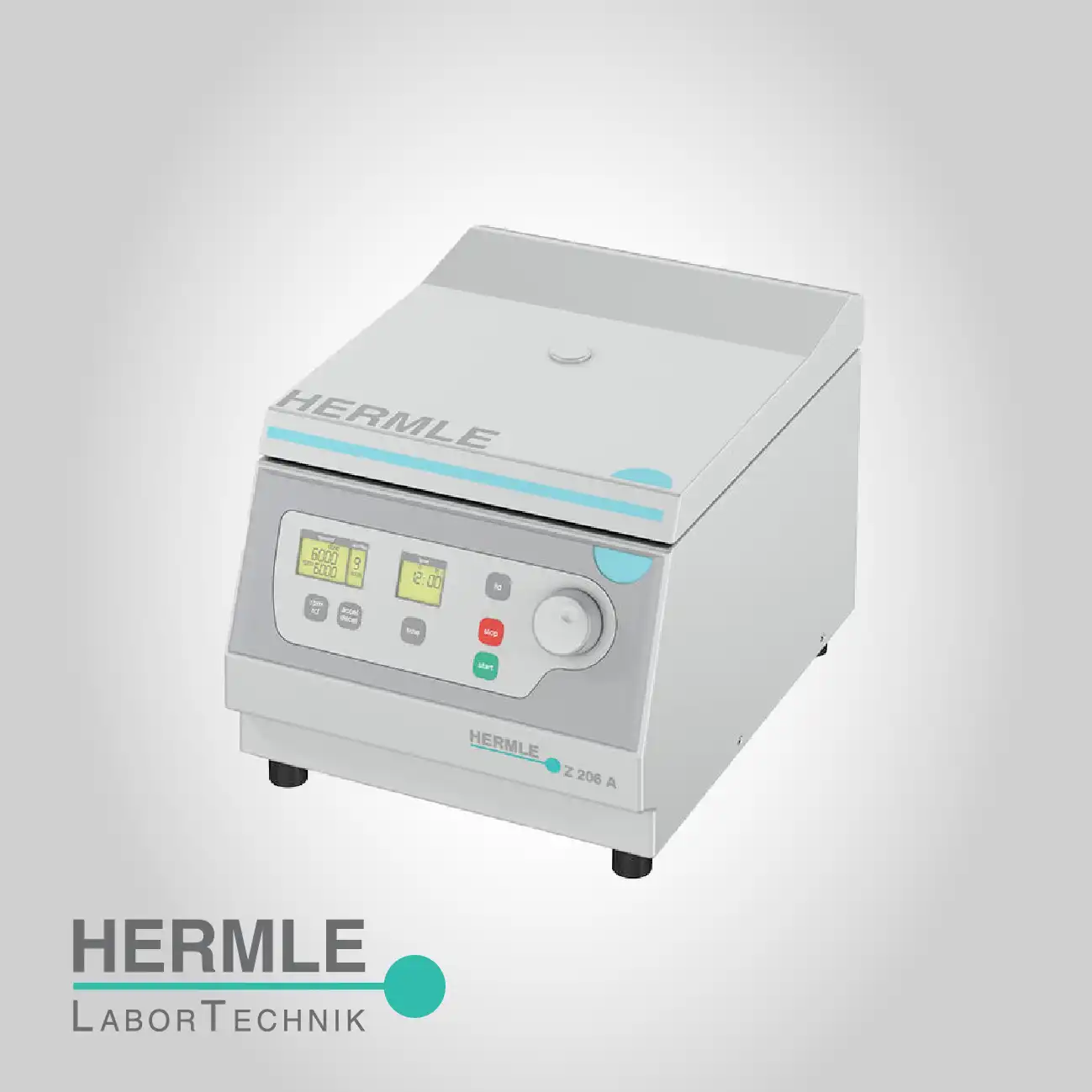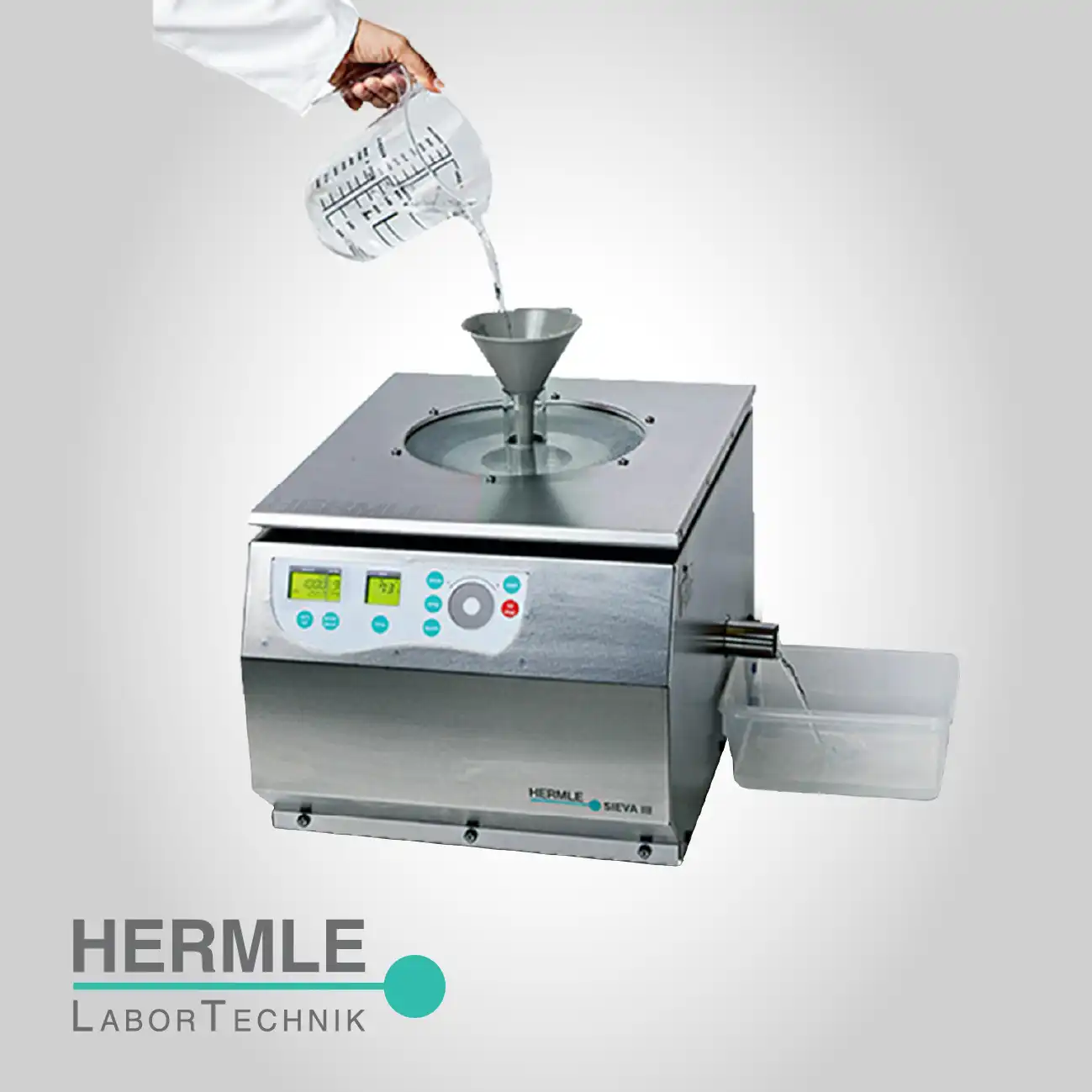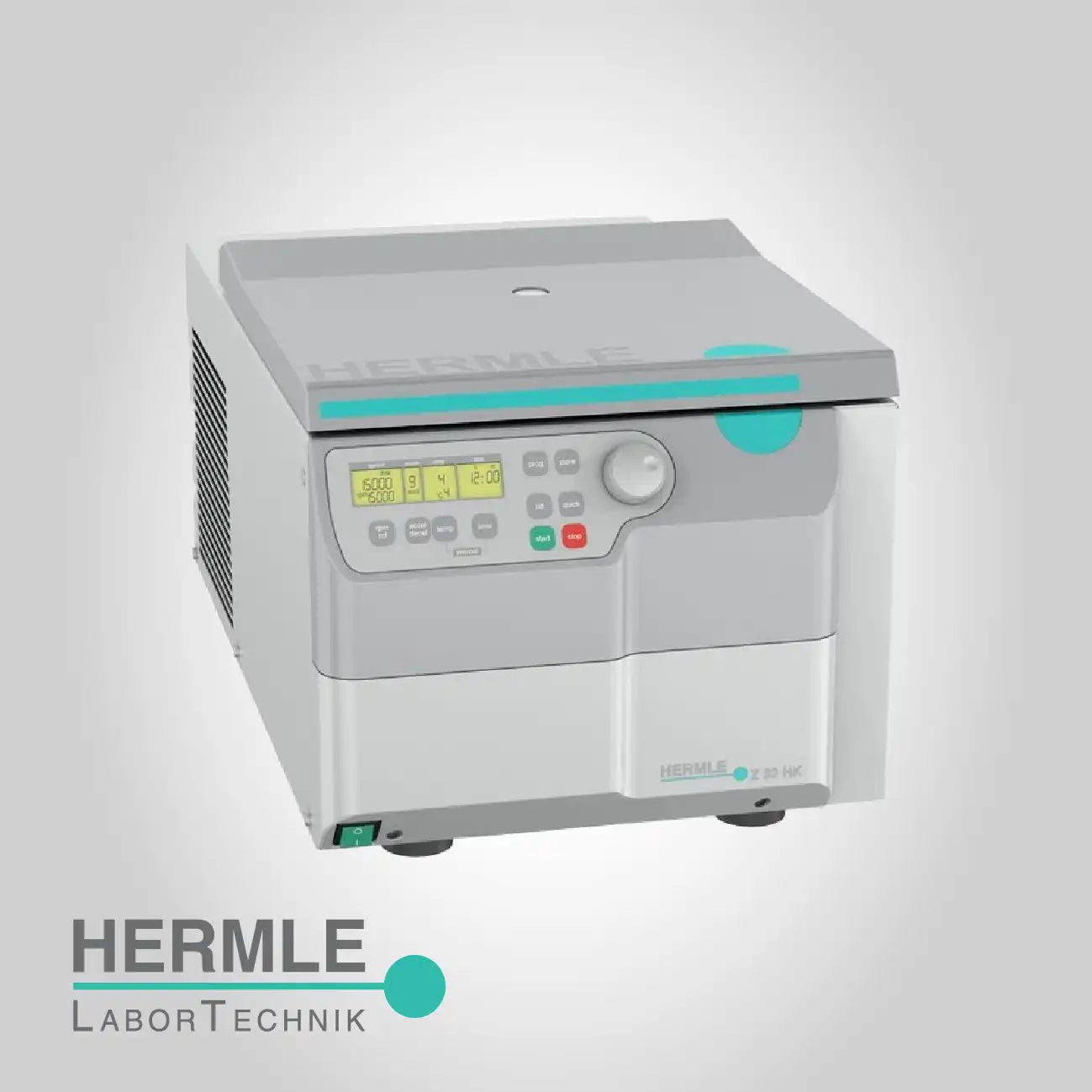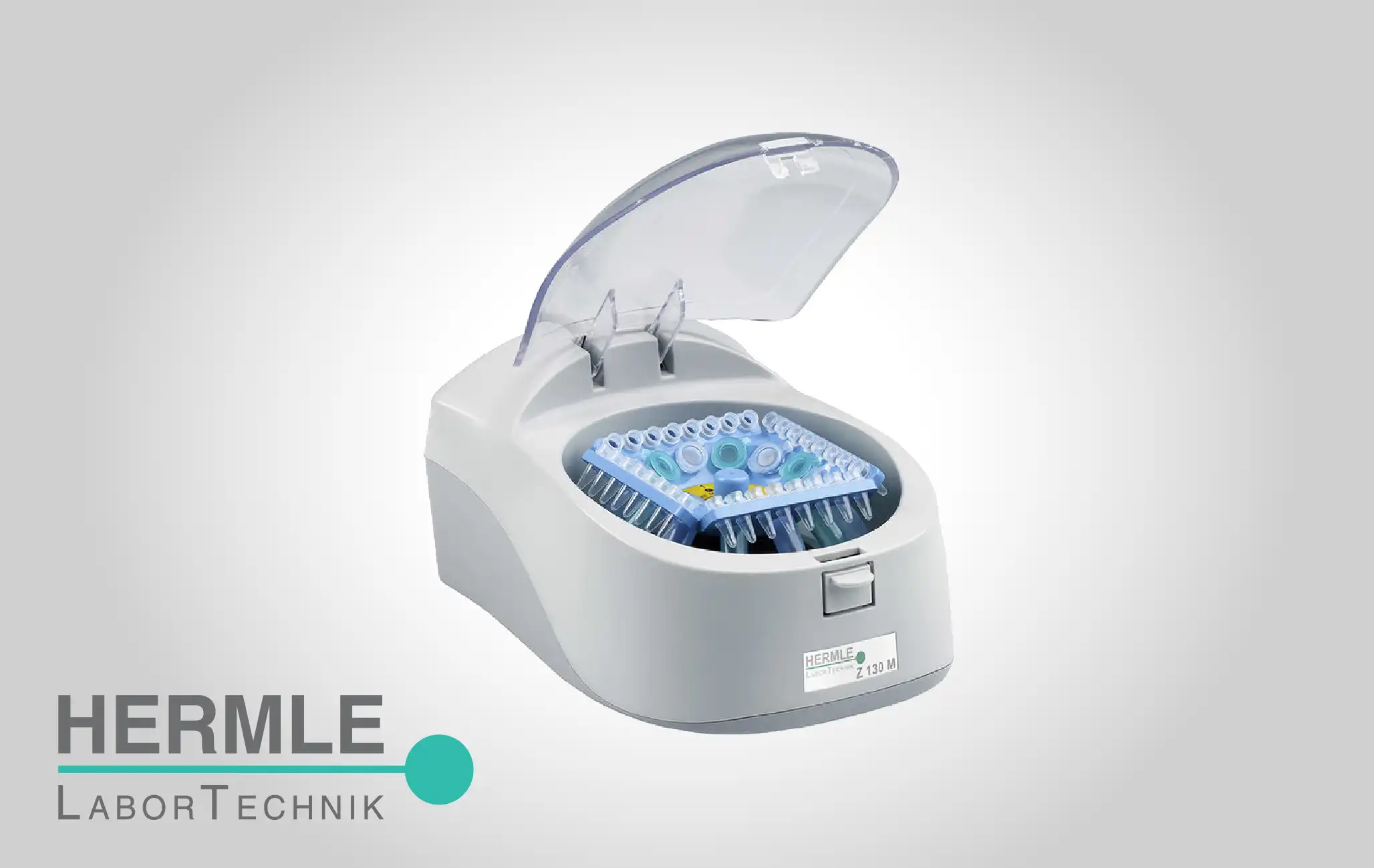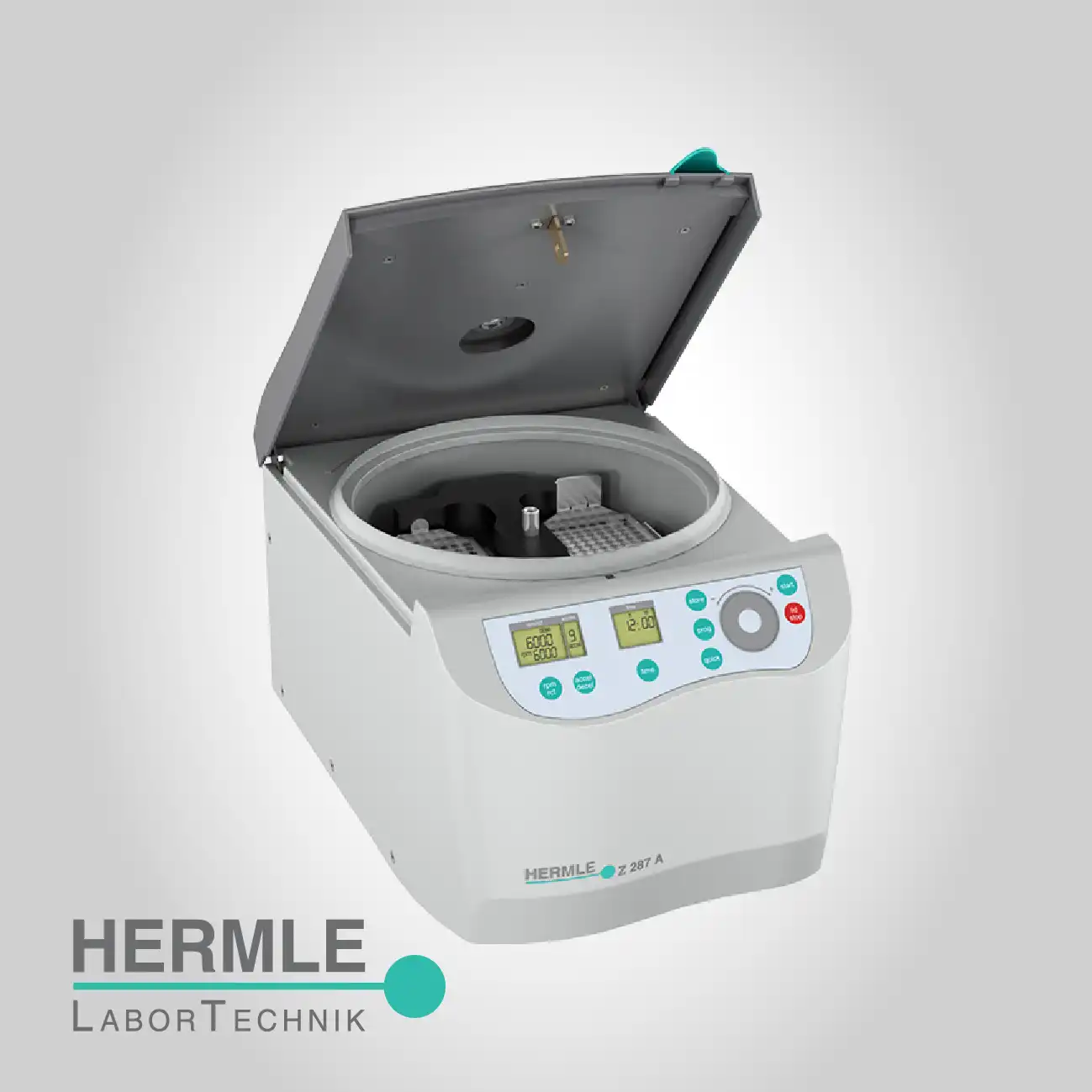
Oil Test Centrifuge
Sediment Water Determination Petroleum Analysis
Hermle Oil Test Centrifuge
The key technical requirement for this category is strict adherence to industrial testing methods, which dictates specific RCF and temperature profiles. These centrifuges feature highly stable speed control and robust heating elements to maintain the elevated temperatures often necessary to reduce the viscosity of heavy oils during the separation process. This combination of thermal and mechanical precision guarantees that the water and sediment volumes are separated and measured accurately according to the governing standard's specifications.
Unlike universal models, the Oil Test Centrifuge is configured to run specialized, conical oil test tubes designed for direct volumetric measurement of the separated bottom layer (sediment and water). The rotors and buckets are precisely engineered to hold these non-standard glassware formats securely and ensure that the separation occurs along the calibrated axis of the tube. This precision in tube handling is vital because the final reading often serves as a critical parameter for fuel quality assessment and commercial transactions.
inconsistent viscosity
Regulatory standards
A primary pain point for oil testing labs is the failure to comply with rigorous industry and regulatory standards due to inconsistent separation conditions. The Oil Test Centrifuge is engineered for exact compliance, featuring highly stable temperature control and RCF generation as mandated by the governing test methods, guaranteeing legally defensible and reproducible results.
Settling of water and sediment
The viscosity of crude oil and heavy fuels severely hinders the gravitational settling of water and sediment, leading to incomplete separation. These centrifuges integrate precise heating capabilities to elevate the sample temperature, significantly reducing viscosity and facilitating complete and rapid sedimentation of the water and solid contaminants, optimizing the separation kinetics.
Volumetric measurement of sediment
The integrity of the conical glassware used for direct volumetric measurement of sediment is critical. The rotor and bucket system is precision-machined to cradle these specialized test tubes securely, ensuring the tube remains perfectly aligned during the high-speed run, which prevents breakage and ensures that the final separation interface aligns correctly with the volumetric markings.
Electronic control system
Inconsistent final volume readings due to variable separation force is a common error. The electronic control system provides extremely stable and digitally controlled speed/RCF. This stable kinetic output minimizes turbulence during deceleration and ensures a sharply defined, compacted pellet of sediment and water, leading to clear, accurate readings against the tube's graduation.
Heavy oils
The need for continuous, long-duration high-temperature runs for certain heavy oils creates stress on standard components. These centrifuges utilize heavy-duty, heat-resistant drive systems and insulated chambers, ensuring operational integrity and extended component life despite the constant exposure to high internal temperatures required by the test standard.
Multiple batches
Laboratories often require the flexibility to run multiple batches of tests simultaneously. These centrifuges are typically configured with rotors that accommodate a high number of the specialized conical oil tubes, maximizing the number of samples that can be processed per cycle and boosting the throughput of the quality control lab.
Audit documentation
Documentation of exact testing parameters (speed, duration, temperature) is mandatory for regulatory audits in the petrochemical industry. The control interface features logging capabilities, providing a digital record of the run parameters, ensuring the laboratory maintains a complete and auditable chain of evidence for every fuel quality determination.
Inconsistent viscosity
Inaccurate heating across the sample batch leads to inconsistent viscosity reduction and non-uniform separation. The advanced thermal system utilizes internal sensors and heating elements that ensure a uniform temperature distribution throughout the rotor chamber and, crucially, within every sample tube, guaranteeing that all samples are separated under identical, standardized conditions.
Click here to know more about Hermle Centrifuges






